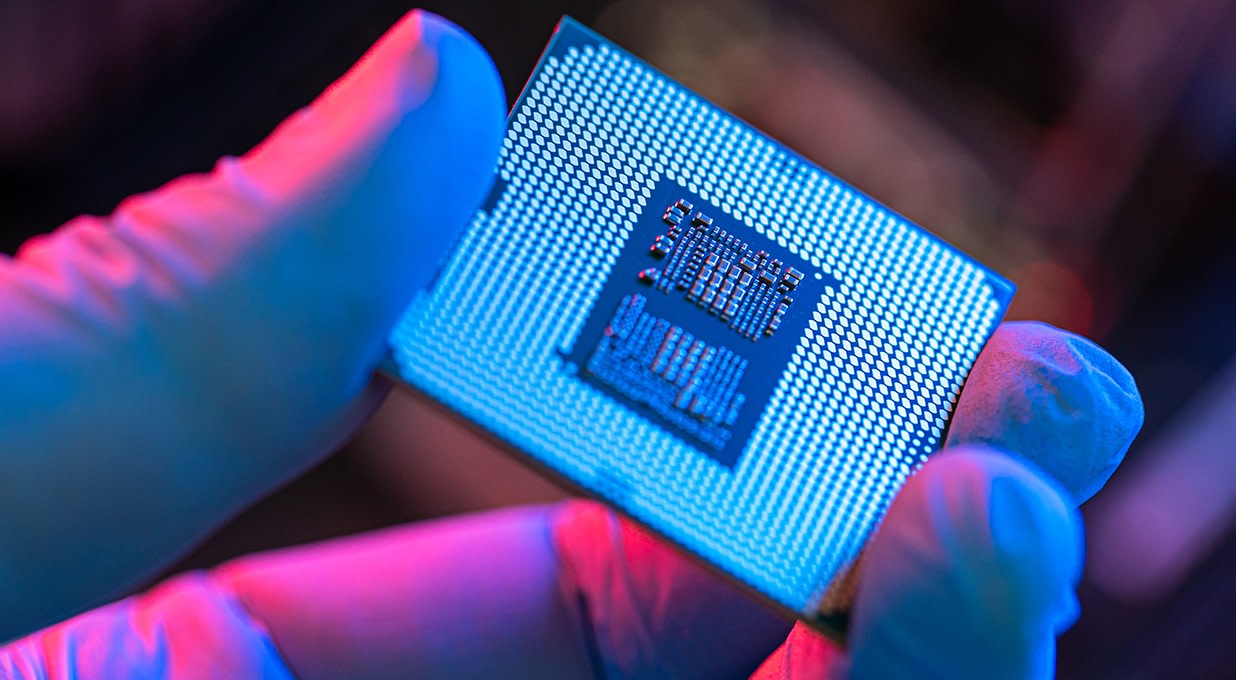ASML reported second-quarter net sales of €6.2bn. That figure was slightly ahead of forecasts but down 9% from last year, with lower system sales only partly offset by higher services revenue.
Orders of new systems totalled €5.6bn, up 54% compared to the first quarter and 24% year-on-year.
Operating profit fell from €2.3bn to €1.8bn but came in 9% ahead of forecasts, helped by better-than-guided gross margins.
Quarterly free cash flow was €386mn, improving from an outflow of €161mn, reflecting the timing of certain cash receipts and payments.
Third-quarter revenue guidance now ranges between €6.7bn and €7.3bn, with full-year sales still expected to be similar to 2023.
The interim dividend was raised 5% to €1.52 per share. Share buybacks fell from around €500mn to €96mn in the period.
The shares were down 5.7% following the announcement.
Our view
ASML’s forecast-beating second-quarter numbers failed to impress the market, overshadowed by third-quarter guidance which fell short of expectations. The company’s end users remain challenged. And while the green shoots of recovery are beginning to emerge, there’s still some work to do to ensure 2024 sales match the €27.6bn seen last year.
Netherlands-based ASML is the market leader in lithography machines used to make semiconductor chips. Without these, you wouldn't have the chips that power the latest phones, computers or even cars.
ASML is the sole producer of the most advanced type of lithography machines, called Extreme Ultraviolet (EUV) lithography. It took over two decades to research, develop and commercialise the technology involved in EUV - which is now a very wide moat for any competitor to try and cross.
Longer-term trends such as artificial intelligence, unprecedented data volumes, and the energy transition underpin forecasts that the semiconductor market could double by 2030. ASML sees an opportunity to more than double its sales and significantly expand margins by the end of the decade and we don't see this as unreasonable.
At the last count, the order book stood at €39.0bn, supporting the future demand outlook. This order backlog gives ASML great revenue visibility and is underpinning the group's expectations for significant growth in 2025. This looks to be achievable even if this year’s order intake falls short of that seen in 2023. But nothing is guaranteed. There's also the services side of things which covers fixing and upgrading machines - a recurring revenue stream which makes up around 20% of sales. The more machines sold, the more recurring revenue ASML receives, making that portion of revenue extremely robust.
But there are some challenges to be wary of. The company's capacity to manufacture and deliver its machines is a potential constraint on growth, and also cash flow as it invests in new manufacturing capacity. Equipment sales to China are also an area in focus. In the first half of the year, China leapfrogged Taiwan to become the company’s largest territory by revenue. For now, fears of a further US crackdown on exports may be boosting Chinese demand, but if that becomes reality it may see sales to the region dry up.
Overall, we think ASML's dominant market position leaves it well-placed to grow over the long term. That’s reflected in a valuation some way ahead of the long-term average. So at a time when sales growth is proving hard to come by, and geopolitical tensions are high, the risks of further ups and downs remain elevated.
Environmental, social and governance (ESG) risk
The semiconductor sector is medium-risk in terms of ESG. Overall, this risk is managed adequately in Europe and North America but has considerable room for improvement in the Asia-Pacific region. It’s reliance on highly-specialised workers means labour relations is one of the key risk drivers. Other risks worth monitoring include resource use, business ethics, product governance, and carbon emissions.
ASML’s management of ESG risks is rated strong by Sustainalytics. It is targeting net zero emissions across the value chain by 2040 with credible near-term targets in place for direct and indirect emissions. Its manufacturing sites have received an internationally recognised certification, which suggests a strong environmental management system. There’s also a commitment to reducing hazardous waste. ASML requires a highly skilled workforce and scores well on employee management, with turnover falling from 6% to 3.6% in 2023. Despite its dominant position it has not had any significant antitrust controversies, with its market position protected by innovation and complexity rather than anticompetitive practices.
ASML key facts
All ratios are sourced from Refinitiv, based on previous day’s closing values. Please remember yields are variable and not a reliable indicator of future income. Keep in mind key figures shouldn’t be looked at on their own – it’s important to understand the big picture.
This article is not advice or a recommendation to buy, sell or hold any investment.No view is given on the present or future value or price of any investment, and investors should form their own view on any proposed investment.This article has not been prepared in accordance with legal requirements designed to promote the independence of investment research and is considered a marketing communication.Non - independent research is not subject to FCA rules prohibiting dealing ahead of research, however HL has put controls in place(including dealing restrictions, physical and information barriers) to manage potential conflicts of interest presented by such dealing.Please see our full non - independent research disclosure for more information.


